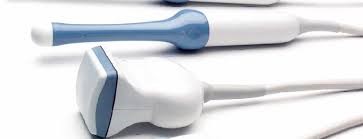
Risk Based Classification for Disinfection
It is very important that reusable medical devices are safely reprocessed (cleaned, disinfected/sterilized) between each patient to prevent infection transmission.
Classifying ultrasound probes based on risk associated with intended use provides a rational framework for associated decontamination methods (sterilize, high level disinfection and low level disinfection).
One such framework is the Spaulding Classification for determining the associated decontamination method required for reusable medical instruments according to the degree of infection transmission risk.
Devices that only contact intact skin are considered ‘non-critical’ requiring low level disinfection (inactivates bacteria, some fungi and some viruses). Devices that contact unhealthy skin or mucous membranes are considered ‘semi-critical’ requiring high level disinfection (inactivates bacteria, fungi, viruses with a few spores remaining). Devices which contact or enter sterile tissue, body fluids or vasculature are considered ‘critical’ requiring sterilization (inactivates all viable microorganisms).
Guidelines released locally by the Royal Society & College of Radiographers and the British Medical Ultrasound Society, Ireland’s Health Service Executive, NHS Scotland and regionally by the European Committee for Medical Ultrasound Safety and the European Society of Radiology, all make use of the widely adopted Dr. Spaulding Classification (or derivatives thereof) to form a consensus for when to high level disinfect ultrasound probes based on their use and patient contact sites. 2-7 Table 1 overleaf summarizes their recommendations.
While the Spaulding Classification is a good general classification system for devices, ultrasound probes have specific usage and reprocessing factors that also need to be considered (Table 1).